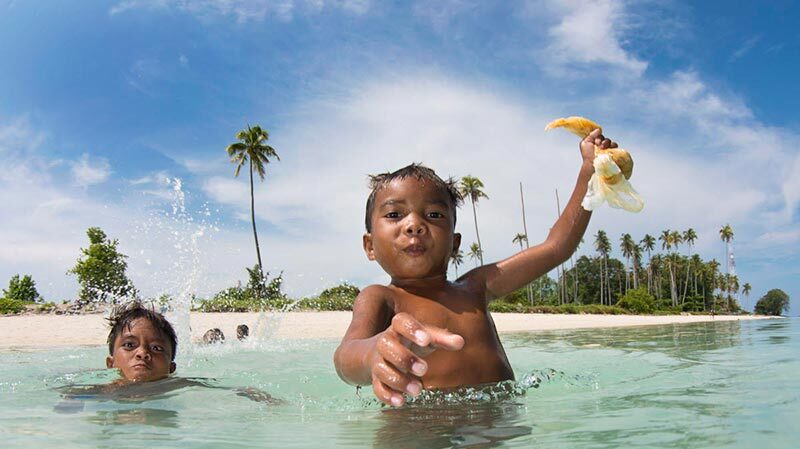
On March 18th, we celebrate Global Recycling Day, a reminder of the importance of reducing waste and protecting our beautiful blue planet. Sustainable travel is about making mindful choices to reduce our environmental impact, especially in destinations lacking proper waste management.
As a dive operator based on stunning Mabul Island, we witness firsthand how overconsumption and waste pollute our ocean home. Despite being a famous tourist destination, the 20-hectare island with 4,000 residents has limited resources for managing waste and minimizing tourism's footprint.
The struggle is real - shipping rubbish to the mainland in Semporna town is costly, so many locals end up burning, burying or directly dumping waste into the surrounding sea. At our Mabul beach resort, we transport our rubbish to Semporna properly and locals can come to us to bring theirs too. However, ocean currents also regularly wash up debris from neighboring areas like the Philippine islands and coastal Malaysian/Indonesian Borneo.
The issue extends far beyond the borders of Mabul. All across Southeast Asia's idyllic island destinations, booming tourism has overwhelmed waste management capabilities and strained local ecosystems. Plastic pollution, excessive emissions, habitat destruction - these are just some of the impacts of unsustainable tourism practices.
The reality on Mabul is that there is no centralized garbage collection system - everything ends up in the ocean or gets burned on the beach. This makes it even more vital that we all do our part to cut down on single-use plastics and properly dispose of any waste. The local community does what they can, but lack resources and support.
Driving positive environmental change requires more than just lecturing others - it takes compassion, openness and truly understanding each other's perspectives. We must approach with empathy, not aggression.
Every individual is influenced by their own circumstances, knowledge and access to resources. Rather than pointing fingers, we need to have thoughtful dialogues that bring people together around shared values and common goals. By connecting over our mutual appreciation for nature's wonders, we're more likely to inspire lasting change through the power of leading by example with kindness. A friendly approach that seeks to understand where others are coming from is the path to fostering real progress.
When exploring Southeast Asia and other destinations, travelers can make a positive impact by adopting sustainable travel habits:
It can be easy to fall into the "holiday" mindset and let good habits slide. But making even a few small changes to reduce disposables makes a huge collective difference in places lacking adequate waste infrastructure.
As divers, we're inspired to protect oceans after seeing vibrant marine life. But preserving environments long-term requires cooperation between sustainable travel choices and local communities with more resources.
So this Global Recycling Day, let's celebrate the small steps each of us can take to reduce waste and build more sustainable communities - from properly recycling at home to making mindful choices while traveling. Our oceans will thank us for it.
What ideas do you have for sustainable travel options while exploring Southeast Asia? Share your tips and tricks in the comments!
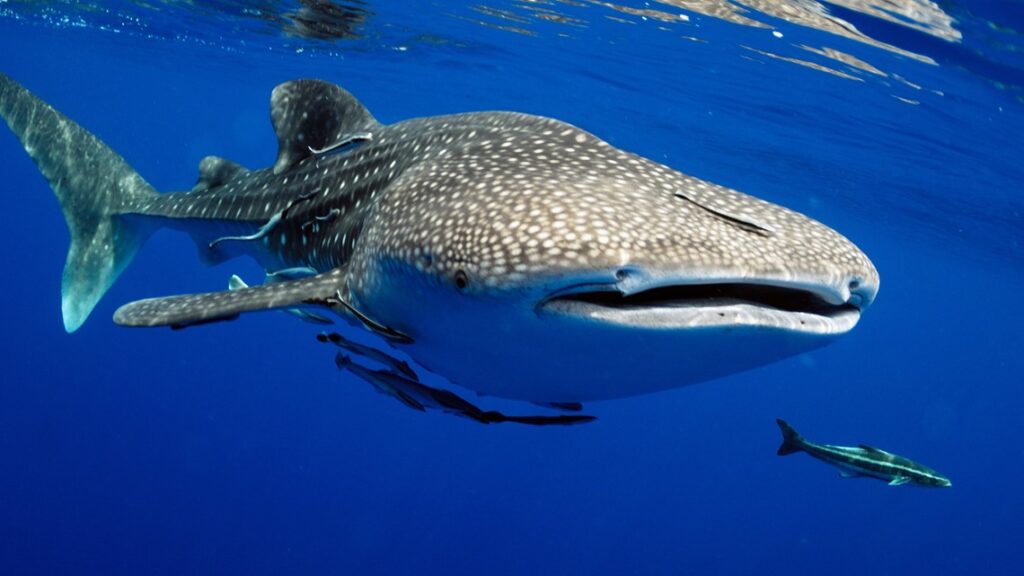
Whale sharks are majestic and gentle giants of the ocean. As the largest fish species in the world, reaching lengths over 40 feet, they are a major draw for marine tourism. However, the rise of irresponsible whale shark tourism practices is causing serious harm. Feeding, crowding, and disruption of migration patterns is negatively impacting whale sharks, which are listed as Endangered on the IUCN Red List.
I have always been amazed about the whale sharks, the gentle and graceful giants of our oceans. As many travelers I wanted to encounter a whale shark once in my life and I did. I was excited to see the animal for the first time in my life. It was in SE Asia while travelling where I was approached by a man offering whale shark sightings and swimming. My eyes became all big and sparky at that moment. In my “little perfect world” I imagined a small group going with a boat to an open ocean and looking for the whale sharks to spot them.
If we are lucky to see them we might go and snorkel with them as well. As the day came the reality hit and the experience became one of the most heartbreaking ones in my life.
A mass of people were gathering for a briefing on how to responsibly interact with whale sharks. We were told to only observe and stay at least 4 meters away from them. As we went to the shore around 15 small boats were waiting for us. Every boat could take 5 people only. I was confused how we going to be safe in those small boats in the open ocean far from the shore.
Well we didn’t go far, we were only 20 m away from the shore when the boat stopped. We were told to go in the water when some men started throwing shrimps into it. All 15 boats were very close together when 6 whale sharks came to feed on the shrimp. Once everybody was in the water (45 people at least) the chaos began. There was no space to observe them from a 4m distance as we and the whale sharks were crowded in a small area.
They gave us 20 minutes of time with them – after that a new group of the same amount of people will enter the water with them. This is going to be all day long, 7 days a week, 365 days per year. I felt horrible seeing people touching the animals all the time, even if you wanted to prevent physical contact it was not possible due to the small crowded area. I was one of the first ones climbing back on the boat because I didn’t want to participate in that horrible chaos and stressing the animals out.
I felt irresponsible to participate in the activity and not inform myself prior to it. Afterwards I did some research about the activities that I participate in as a traveler to avoid being a part of a negative impact to any of our beautiful animals on this planet. I had the chance to encounter whale sharks quite a few times under water while diving. They were there in their natural behavior and as it was an unexpected encounter it made the experience harmless to the animal, positive and unforgettable for me.
Unfortunately whale shark tourism is increasing every year because of the increased demand. Let me explain how these irresponsible interactions have a negative effect on whale sharks as they already are in decline.
Whale sharks normally follow nutrient-rich plankton blooms over long migrations. However, feeding by tour operators is changing their natural behavior. Whale sharks remain in feeding areas instead of migrating [1]. This affects breeding, as the sharks are prevented from reaching mating and pupping grounds [2].
The feeding teaches whale sharks to associate boats and humans with food. They actively approach boats, instead of avoiding them. This risky behavior could lead to boat strikes and injuries outside of protected areas, where fishing vessels may mistake them for prey [3].

Crowding dozens of people and boats into a small area with whale sharks causes chaos. There is unavoidable physical contact, despite guidelines to keep 4m distance [4]. The surrounding crowds increase stress levels and disrupt natural behavior [5].
Boat strikes and propeller injuries are common, as the sharks spend more time at surface approaching vessels. Human bacteria and pathogens transferred by contact also pose an infection risk to the sharks [6].
Whale sharks normally feed on dense plankton patches during migration. But artificial feeding provides limited nutrition from bait fish or krill [7]. This may lead to poor health over time.
The sharks also waste energy chasing feeding boats, instead of naturally foraging [8]. And remaining in one area affects ecosystem balance, as whale sharks are not performing their role in nutrient transport across oceans [9].
The solution is transitioning to responsible whale shark tourism. Practices should minimize environmental impact and disruption of natural behaviors [10]. Ethical guidelines include:
We all desire memorable wildlife encounters. But our actions should not come at the expense of the animals. As consumers, we can drive change by avoiding unethical tour operators worldwide. Choosing responsible, sustainable whale shark tours is the solution.
By Florencia Juarez (Instructor at Mabul beach resort)
Coleoid cephalopods like octopuses, squid, and cuttlefish are true masters of disguise and camouflage thanks to their sophisticated skin coloration systems. Their ability to change color, pattern, and even texture almost instantly gives them a huge survival advantage in the ocean.
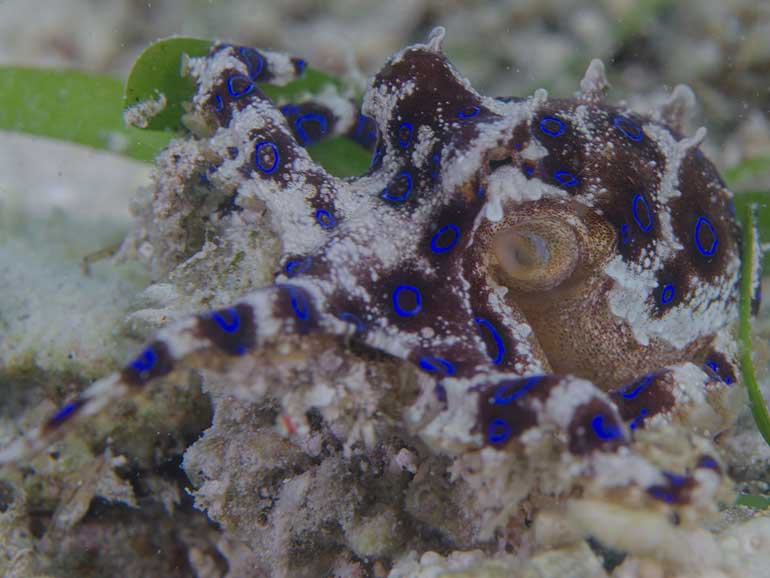
In this post, we'll explore the amazing biomechanics behind coleoid skin color change and camouflage abilities. Read on to learn how these sea creatures manipulate specialized cells called chromatophores and muscles in their skin to pull off spectacular disappearing acts right before our eyes.
The key to the color-changing abilities of coleoids lies in specialized pigment-containing cells called chromatophores embedded throughout their skin. Each tiny chromatophore contains a sac of color pigment, usually red, brown, or yellow, surrounded by tiny muscles.
When the muscles contract, the chromatophores expand and become visible as splotches of color on the skin. When the muscles relax, the chromatophores contract into tiny dots, concealing the color.
By selectively contracting and relaxing different chromatophores, coleoids can rapidly change their skin's colors, patterns, and textures to blend into their surroundings. While chameleons change color over seconds, coleoids can transform in just 50-200 milliseconds!
Some coleoids like cuttlefish and octopuses also have muscular hydrostats in their skin tissue. These specialized musculature systems allow them to deform their skin into bumps and ridges that precisely mimic the textures of surrounding rocks, coral, and more.
Males can even display mating signals to females on one side of their body while simultaneously showing aggression to rival males on the other. Their soft hydrostatic skin allows them to rapidly switch between cryptic and conspicuous displays.
With their sophisticated chromatophore and skin muscular systems, coleoids truly are masters of rapid camouflage and visual signaling unrivalled in the animal kingdom. Their neutral network-controlled skin provides a huge survival advantage, allowing these cephalopods to escape predators, ambush prey, and communicate right under our noses.
Next time you spot an octopus or cuttlefish, while diving in Mabul, take a moment to marvel at their incredible color-changing abilities!
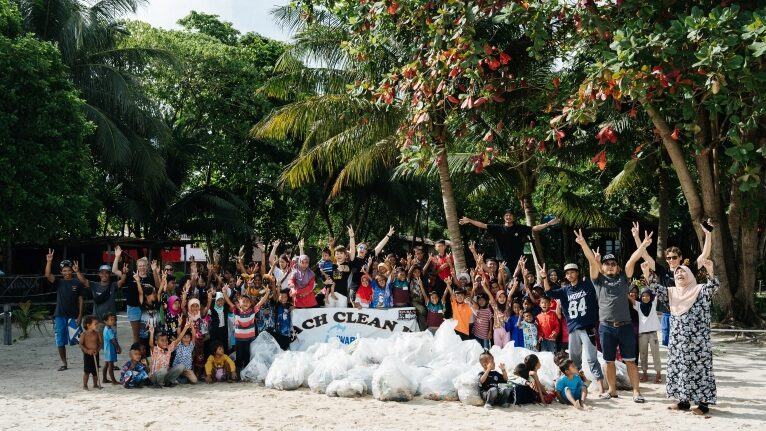
Each year, tons of trash and plastic waste wash up on shores around the world. This garbage pollutes the oceans, harms marine life, and turns pristine beaches into dumping grounds. Beach cleanups are a great way to combat this growing threat for the environment. But do they really make an impact?
In this blog post, we'll explore what beach cleanups entail and the tangible and intangible benefits they provide. We'll also highlight how cleanups raise public awareness, provide educational opportunities, and encourage community involvement. You'll learn about the surprising items found via cleanups and how this "beachcombing" data helps scientists. We'll also address some common criticisms and questions about beach cleanups and their efficacy.

By the end, you'll understand why beach cleanups are an easy, fun and rewarding way for people of all ages to have a real and measurable impact on this pressing environmental problem. You'll learn why every piece of trash picked up matters. Let's dive in to the important role we can all play through beach cleanups to keep our waves, sand and shores clean for generations to come.
A beach cleanup is exactly what it sounds like - an organized effort by volunteers to pick up and remove trash from beaches. Beach cleanups may be focused on a specific stretch of shoreline, or involve covering a broad area. Some cleanups are small efforts organized by local community groups, while others are large-scale events that convene hundreds or even thousands of volunteers. International organizations like Ocean Conservancy sponsor and promote major annual beach cleanups around the world.
Participants in a beach cleanup usually meet at a designated location and time. Organizers often provide supplies like garbage bags, gloves and pickup tools. Volunteers then fan out to scour the beach and collect debris. Some cleanup events are more meticulous, having volunteers comb systematically through set sections. Others take a more casual approach, allowing volunteers to wander and pick up trash as they go.
Debris collected ranges from small items like cigarette butts, bottle caps and food wrappers to larger objects like abandoned fishing gear, plastic bottles, bags, cans, tires and more. Unusual finds like household appliances and old cars even turn up! Collected trash is sorted, weighed, and disposed of or recycled properly. Data on the types and amounts of garbage is recorded to help understand pollution patterns.
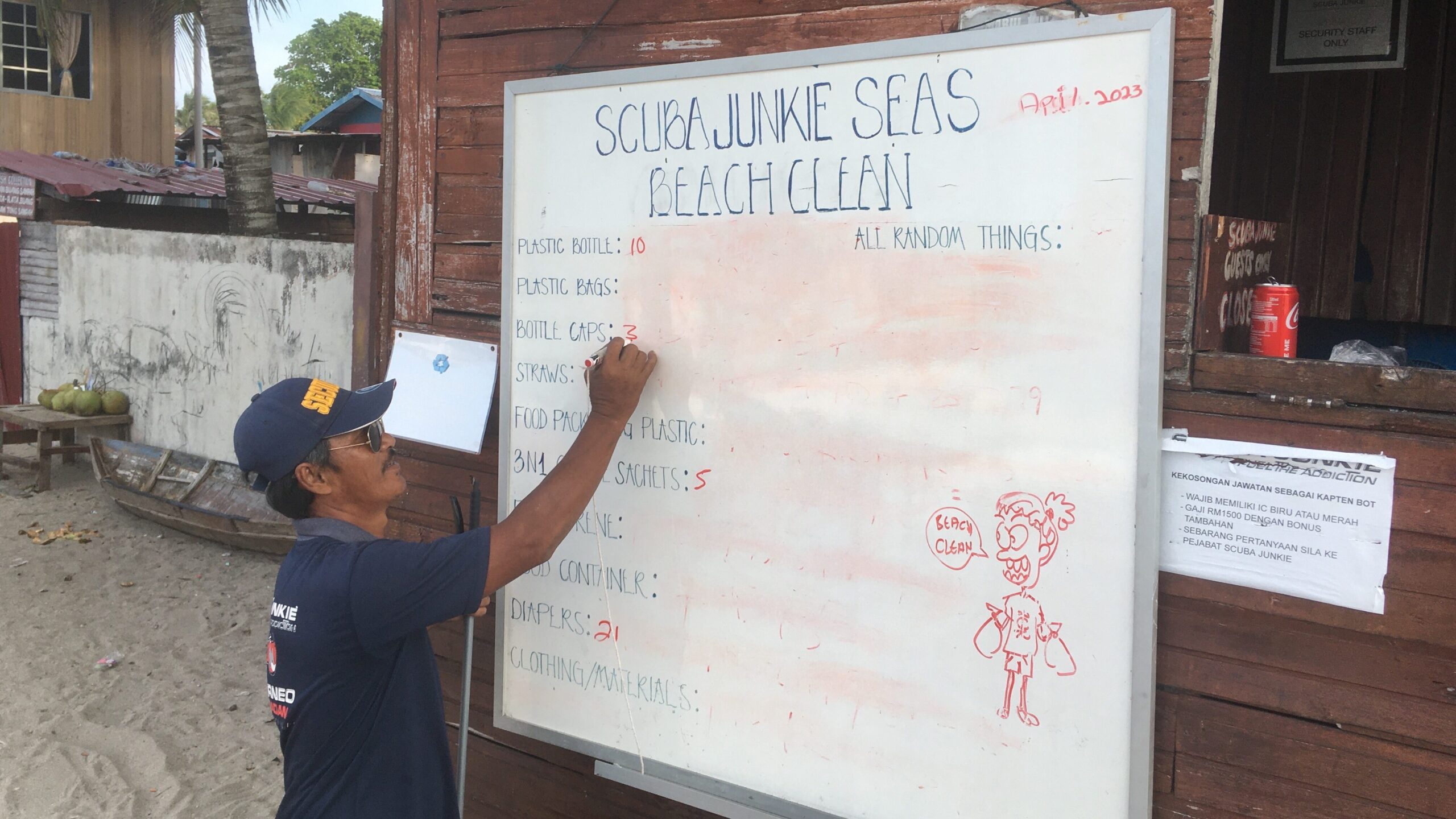
Beach cleanups help beautify beaches, preventing trash from washing out to sea or impacting wildlife. They also raise public awareness of the global marine pollution issue. Volunteers find beach cleanups rewarding, knowing their efforts contribute to environmental solutions.
With piles of trash removed from beaches each year by volunteers, it’s clear cleanups make a visible impact. But some may wonder whether these efforts really help since trash keeps washing ashore. However, research shows cleanups do actually make a significant difference.
According to the Ocean Conservancy, over 348 million pounds of trash has been collected over the past 35 years. That's a staggering amount that would otherwise still be polluting beaches and oceans. Studies have quantified the volume of debris removed by cleanups at specific sites and extrapolated the larger impact. For example, a 2021 study by researchers at Norce Norwegian Research Centre estimated that between 4,000 and 12,000 tons of trash is removed globally by cleanups every year.
In addition to removing existing trash, cleanups help prevent debris from breaking down further and spreading back into the marine environment. Research has shown that environmental conditions can quickly degrade plastic bags, bottles and other rubbish discarded on beaches. So keeping shorelines free of litter stops this process. Cleanups also raise awareness of the scale of pollution, encouraging better consumer habits that reduce waste overall.
While a single cleanup may seem like a drop in the bucket, the cumulative effect of sustained efforts across countries and years is undeniable. The fact that trash keeps coming is precisely why cleanups must continue. Like tackling any big issue, real change happens through many small actions added together. Beach cleanups are a simple way we can all contribute to this vital effort.
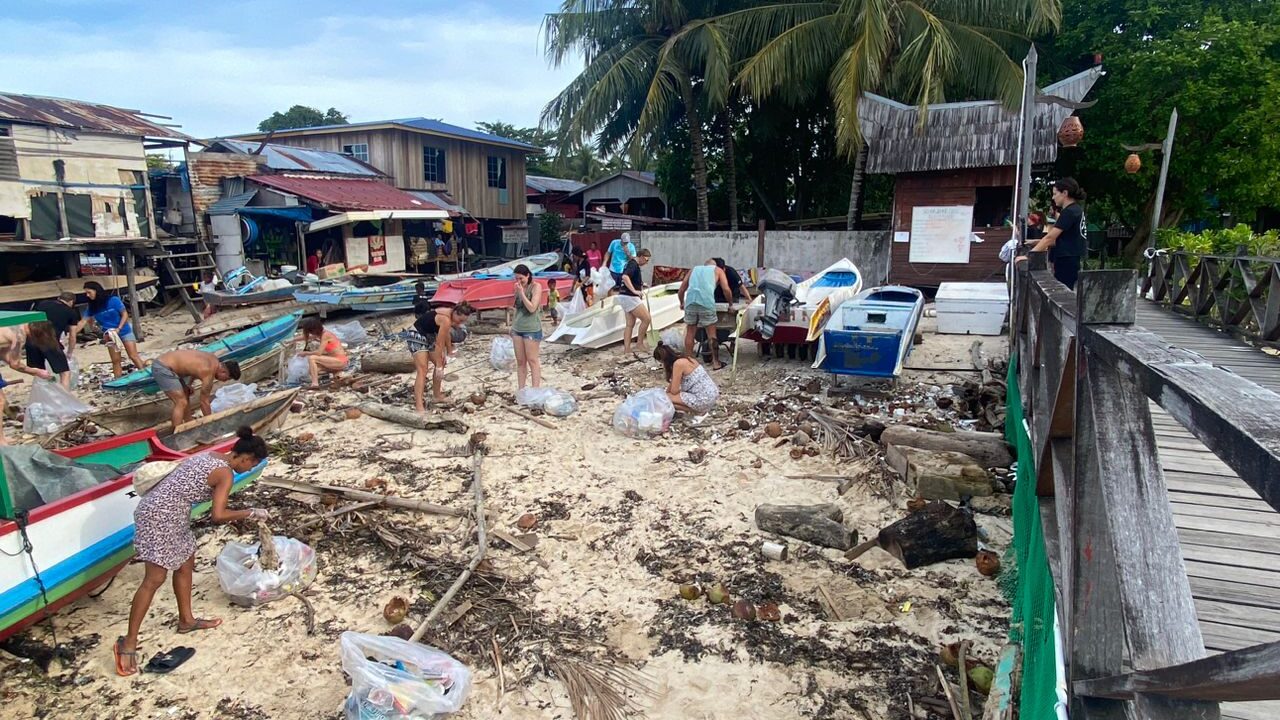
Care for the local environment is at the core of all our business operations at Scuba Junkie. We hold ourselves to high responsible tourism and eco-tourism standards, striving to reduce our own adverse impacts on the marine environment. We implement eco-friendly practices and technologies to contribute to a more sustainable future.
Scuba Junkie’s Mabul Beach Resort has featured on the Top Ten list since joining Green Fins in 2014, a feat made very difficult given the size of the dive operation.
We work together with S.E.A.S., holding weekly clean-ups to remove rubbish from the beaches, forests, and reefs surrounding our resort. We frequently collaborate on these cleanup efforts with local community members, grassroots organizations, NGOs, and other dive operators.

Together, we gather as many people as possible for clean-ups to make a bigger positive impact. By partnering with local stakeholders, we can raise awareness about environmental issues, take direct action through regular clean-ups, and promote sustainability in the region. Our shared commitment helps preserve the natural beauty and diversity that draws visitors to our resorts.
In addition to beach cleanups, Scuba Junkie takes action below the surface to protect the marine environment. Our dive team frequently conducts underwater reef cleanups to remove trash and debris that has sunk to the seafloor. On these dives, our instructors and divemasters comb through coral reefs collecting discarded fishing nets, anchors, bottles, plastic bags and other rubbish. These items can smother and break fragile corals, as well as entrap and endanger marine life.

Visiting Mabul Beach Resort provides a rewarding opportunity to directly participate in conservation. When staying with us, you can join one of our weekly beach cleanups (every Saturday afternoon) to help remove and properly dispose of plastic litter and other trash along Mabul's coastline. Witnessing first-hand the volume of waste collected will deepen your understanding of this environmental threat. You'll gain satisfaction from actively contributing to the solution.
You can also minimize your own plastic waste. Making conscientious choices while traveling - refusing disposable plastics, recycling properly, and being mindful of your consumption - helps sustain the natural habitats and wildlife you came to experience. Your visit supports organizations working hard to protect this destination.
Back in your local community, many options exist to continue the effort. Joining local beach or river cleanups is an uplifting way to spend a few hours giving back. At home, pledging to cut back on single-use plastics makes a real difference multiplied by entire communities. Support campaigns to ban harmful materials or advocate for industry responsibility programs. Use your voice on social media to spread sustainability tips and spotlight environmental challenges.
What may seem like a small effort can have a huge impact when multiplied by people worldwide. Beach cleanups actively remove tonnes of harmful debris, prevent further environmental harm, raise public awareness, and provide data to inspire change. By participating in cleanups at home or on your next vacation, you can help stem the tide of plastic pollution threatening our oceans. The positive impact is real. Beach cleanups matter.

